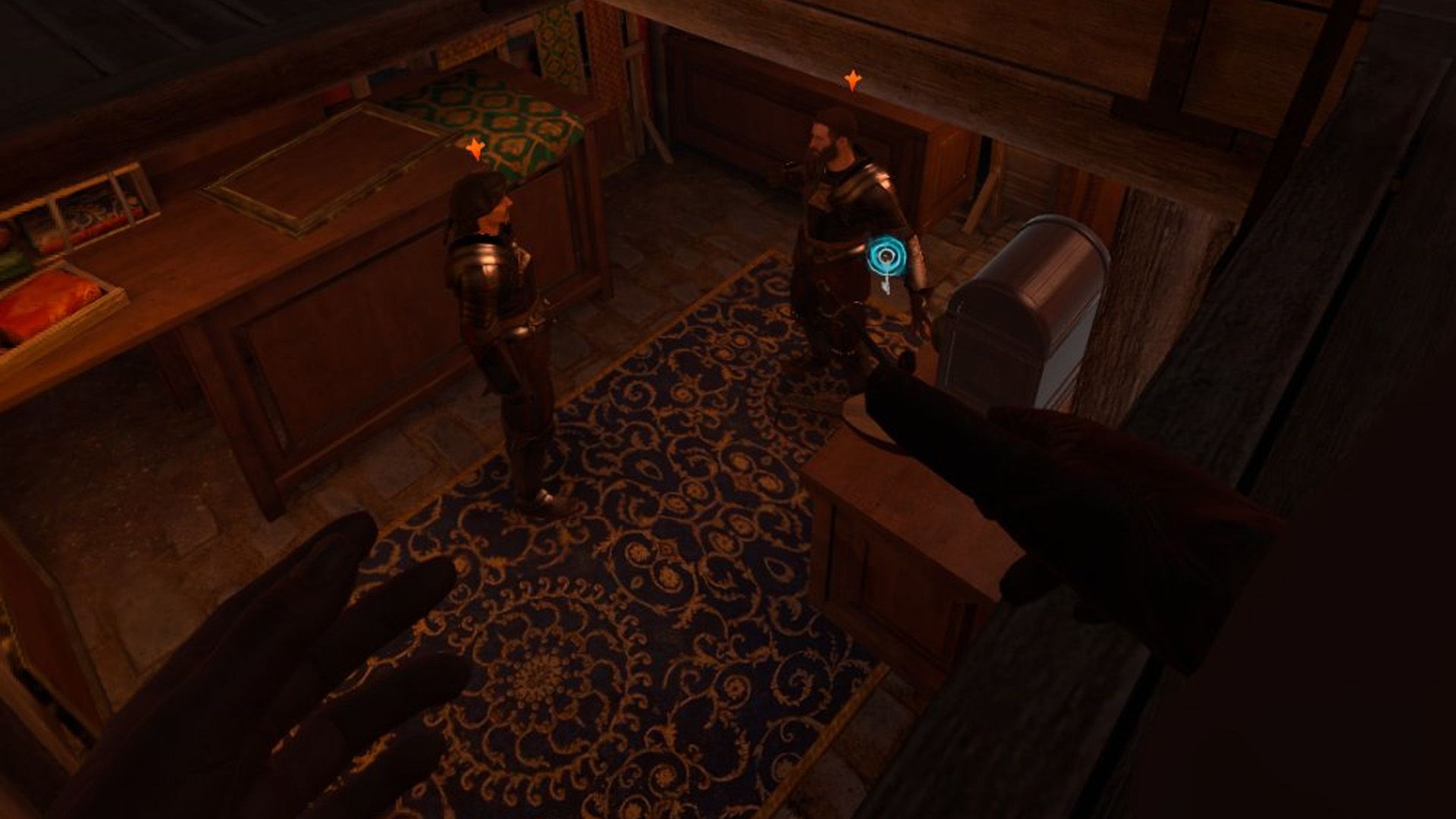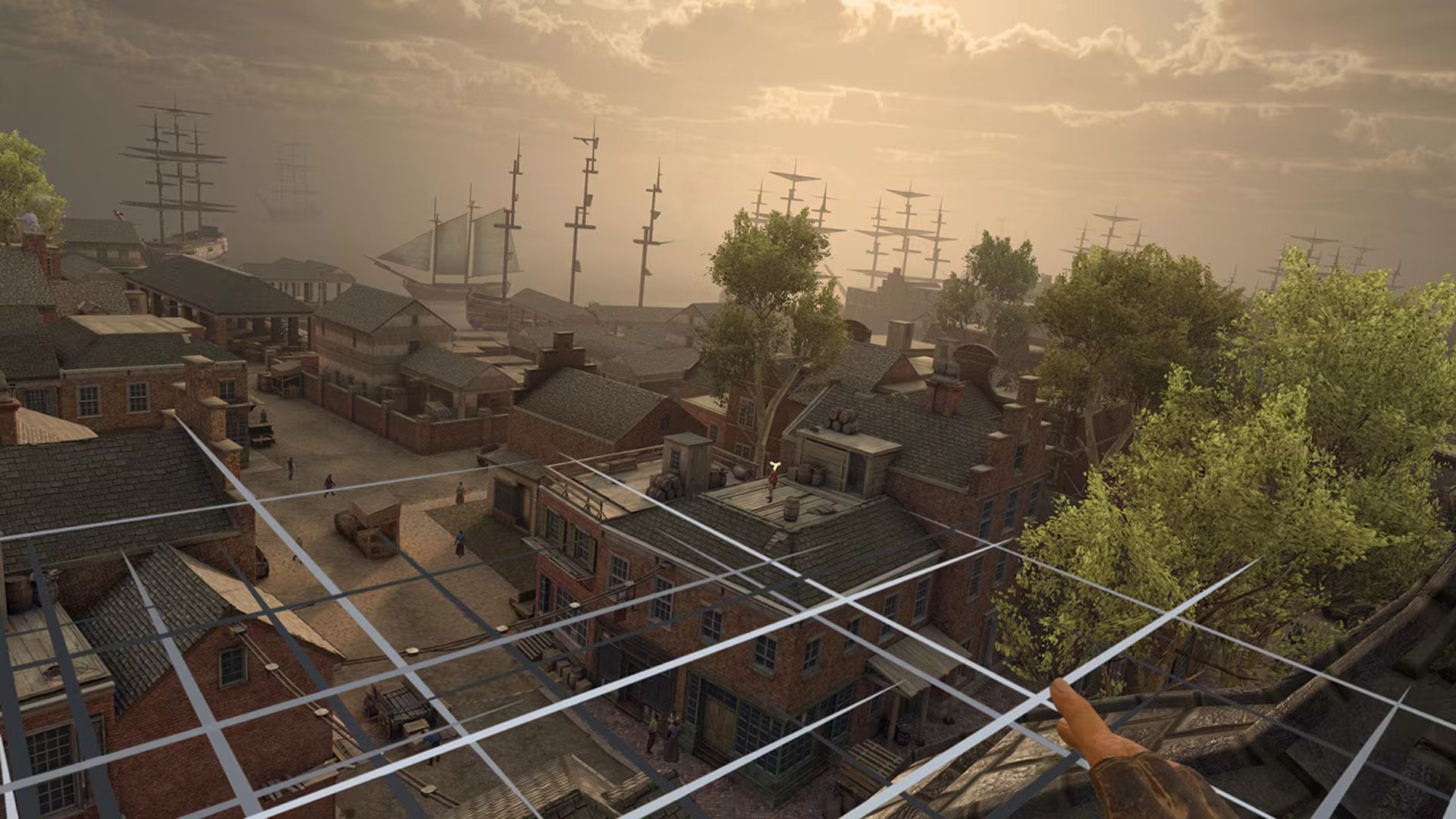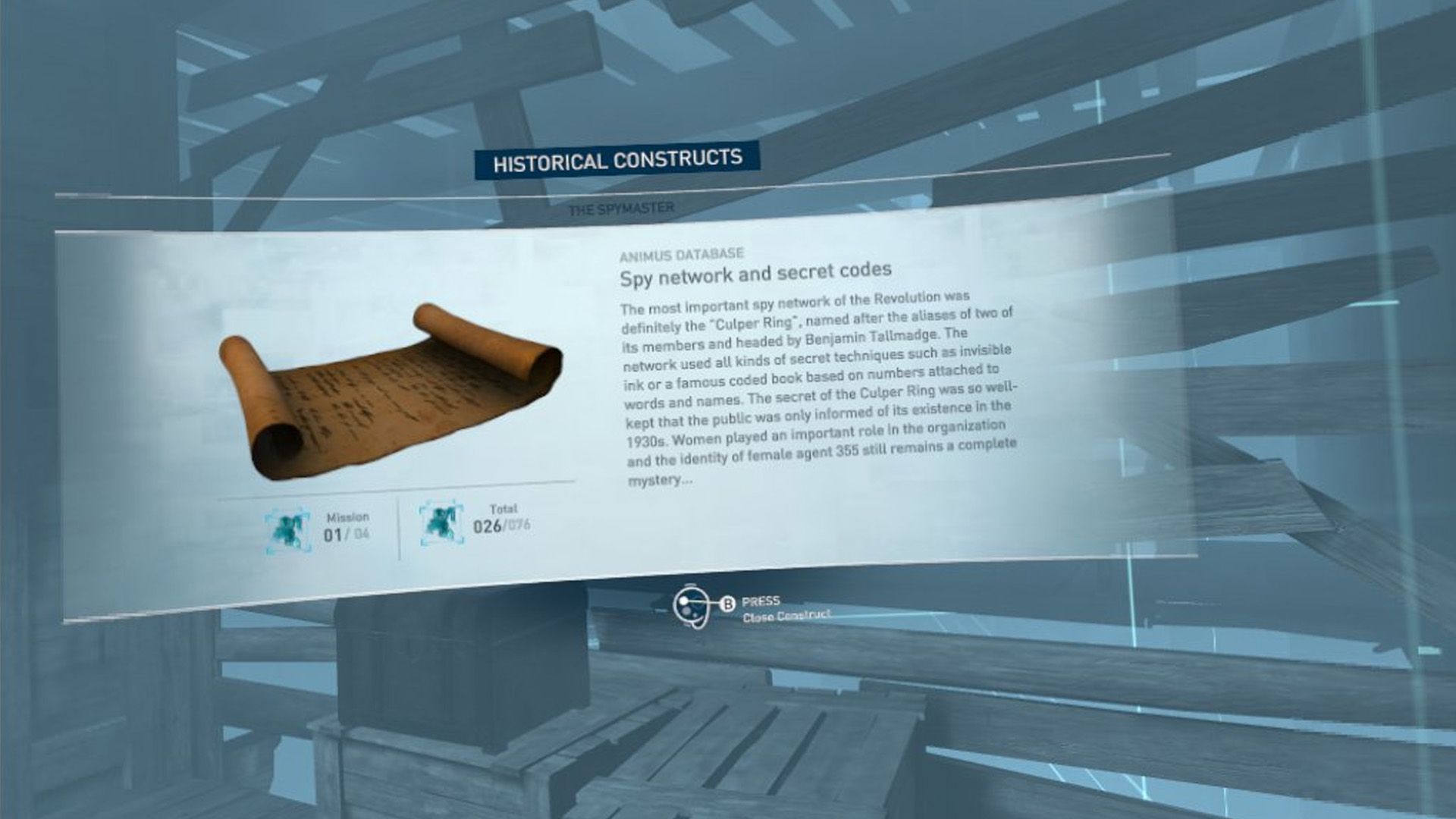<
The power fantasy of being an assassin and the simple pleasures of virtual tourism might not seem like ideas that would go hand-in-hand, but the Assassin’s Creed series has managed to mash them together for 16 years and counting. Assassin’s Creed Nexus VR brings these gameplay prerogatives to virtual reality for the first time, taking familiar systems that developer Ubisoft has been playing with across the course of the franchise and faithfully reimagining them from a fresh perspective. In some ways, the VR experience feels like the perfect fit, although not every aspect of the series translates without any hiccups.
Assassin’s Creed Nexus VR revisits three past protagonists — Ezio, Connor, and Kassandra — tying several discrete stories up in a metaplot of playing double agent with the modern day Assassins and Templars. 16 missions rotate between the various settings and focus on time-honored Assassin duties, from tailing enemies for information to deploying the hidden blade to strike the final blow. The overall structure is less open-ended than the series standard, but there’s plenty of room to shirk objectives in favor of running across rooftops and seeking out collectibles.
Arcade Gameplay With Realistic Elements
For something that aims to capture as wide of an audience as an Assassin’s Creed title, VR accessibility can be a nightmarish tightrope act. Tipping the scales too far in either a realistic or arcade-y direction runs the risk of alienating potential fans, to say nothing of managing the odds of motion sickness and consideration of unique needs. Assassin’s Creed Nexus VR mostly lifts its attempt at a sweet spot from the surprisingly apt balance of the franchise’s traditional console games, with parkour that can automatically handle jumps and simplistic parry-oriented combat representing the major points of handholding among more complex systems.
The best part of Assassin’s Creed Nexus VR parkour lies in the enormous verticality that it provides, making nearly every environment into a playground where going up is just as valuable as going forward. Manually grabbing out for handholds is more engaging than Assassin’s Creed climbing has ever been before, and it adds a certain thrill to the fear of a fall. The appeal of auto-jumping from platform to platform (achieved by holding a button) will likely come down to personal taste, but it does make finding the perfect paths to fly across areas at top speeds seamless.
Exciting Stealth Trumps Sluggish Combat

Combat, on the other hand, suffers from shackling itself to the conventions of past games. Encounters tend to involve a lot of standing around and waiting for the right parry opportunities, and cranking things up to the Hard difficulty feels like it mostly just slows things to a crawl. The nuances of swinging weapons in VR are generally wasted on basic attack zones, so a hit registering has more to do with arbitrary rules than whether it made contact with skin. Ranged options feature heavy aim assist that throws skill out of the equation, and pointing a bow in an enemy’s general direction is enough to score a hit.
Like Assassin’s Creed Mirage, the one upside to weak combat is that avoiding it incentivizes stealth, which is where the real fun of Assassin’s Creed Nexus VR lies. Tailing missions gain a lot more life when they involve physically peaking around corners and clambering up walls, and flicking to activate a hidden blade while jumping onto an enemy from above is invigorating. Mentally mapping out the perfect route through an encampment feels more inventive and involving in VR, although the largest threat of failure is merely the dread of another sluggish brawl.
Great Accessibility, Minor Bugs

To Ubisoft’s credit, virtually every aspect of Assassin’s Creed Nexus VR‘s gameplay has accessibility options in place, all neatly explicable through the use of the Animus. Smooth locomotion, adaptive blinders, and even the shadow of a nose can work as antidotes to motion sickness, and a displayable grid and Leap of Faith tunnel vision work to alleviate a fear of heights. Button controls can be substituted for physical activities like grabbing a weapon from a holster or latching onto handholds. Audio options that place an emphasis on key sounds or speech can make it easier to discern what’s important in the sounds of a bustling city, especially useful when overheard conversations are as amusing as they often can be.
Audio, incidentally, may need a quick fix or two, as a few points in the campaign triggered a bug where broken crackles overtook the soundscape. This doesn’t seem to have been a hardware issue, but it may or may not be a widespread problem with the game itself. The experience was otherwise free of major bugs, with a couple of animation errors among milling NPCs marking the only memorable distractions.
Hamstrung Graphics & A Decent Story

Setting aside those minor quirks, seeing historical cities come to life in VR has an undeniable appeal, but it’s not surprising that Assassin’s Creed Nexus VR‘s detail and realism don’t match up to other recent titles in the franchise. On the Quest 2 especially — the platform that most people are likely to play it on — hardware limitations result in simpler geometry and lots of pop-in, and the time spent climbing up walls offers plenty of opportunities to get up close and personal with muddy textures. It’s not an ugly game in a way that’s likely to spoil anyone’s fun, but aside from some highlights like fireworks over the canals, it doesn’t have the opportunity to be much of a visual stunner.
Assassin’s Creed fans who enjoyed past locations like Venice and Boston are likely to appreciate revisiting them the most, and the mileage-may-vary benefits of nostalgia can determine some of the value found in the narrative experience at large. That’s not to say that Assassin’s Creed Nexus VR is pandering in any particular way, but finding new threads in and around the past stories might be best appreciated by those familiar with key characters and concepts. The quality of the writing is generally on par with standard Assassin’s Creed storytelling, even if focusing on several smaller narratives results in a more minor impact overall.
Final Thoughts & Review Score
Assassin’s Creed Nexus VR juggles a lot as a standard-bearer for AAA VR games, and the balancing act means that it’s unlikely to be exactly what any given person wants it to be. As a loyal and reasonably robust translation of a popular series, however, it smoothly avoids any critical fumble. It’s easy to recommend the game for Assassin’s Creed fans, and it lays a solid foundation that makes a sequel seem like a tantalizing prospect. Reworked combat could go a long way in making Assassin’s Creed Nexus VR better, but the joys of stealth and daredevil exploration are enough to grant the weak points some forgiveness.
Assassin’s Creed Nexus VR releases November 16, 2023 for Meta Quest 2, Quest Pro, and Quest 3. Screen Rant was provided with a digital Quest 2 download for the purpose of this review.





